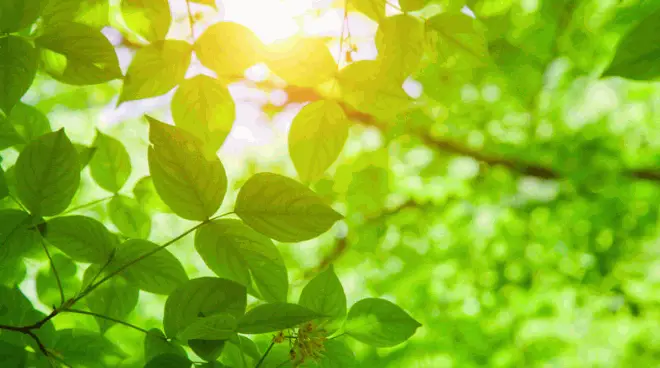When you take the time to study a particular tree, you’ll notice different leaf forms. Before too long, you’ll realise the leaves in direct sunlight appear smaller, and the leaves in the shade are larger.
This is down to how leaves adapt to their surroundings, which is why there are sun leaves and shade leaves, both responding to sunlight.
While the names of sun leaves and shade leaves hint at significant differences between them, most observers aren’t aware of the different types of leaves you are likely to find on a single tree, let alone several.
This guide to sun and shade leaves will inform you of the differences between the leaves, how to know which leaf is which, and the key features and benefits of each life. From size to colour, sunlight significantly impacts the appearance and behaviour of a tree and its leaves, and if you are interested in this topic, we have everything you need to know.
Characteristics Of A Sun Leaf
Sun leaves are leaves that have adapted to thrive in direct sunlight. Here are some of the critical characteristics of sun leaves:
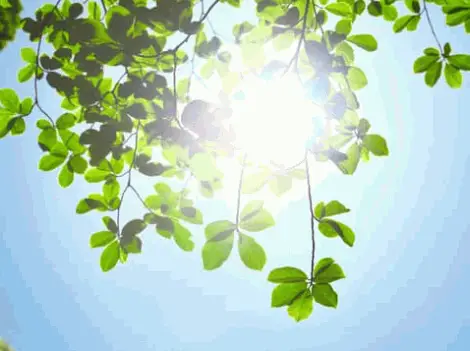
Small Size
Sun leaves are typically smaller in size than shade leaves. Smaller leaves can dissipate heat more effectively and require less water.
Thick And Waxy
Sun leaves have thick and waxy cuticles on their surface, which helps to prevent water loss and protect against UV radiation damage. The waxy coating also helps to reflect excess sunlight and reduce heat build-up.
Dense Chlorophyll Content
Sun leaves have a higher chlorophyll content than shade leaves, allowing them to absorb more light and maximise photosynthesis under stronger light intensity.
Reduced Number Of Stomata
Sun leaves have a reduced number of stomata, specialised cells that allow for gas exchange between the leaf and the environment. This helps to reduce water loss and increase water-use efficiency under dry, sunny conditions.
Narrow-Leaf Hape
Sun leaves often have a slim leaf shape, which reduces the leaf’s surface area and helps to reduce water loss.
Higher Nutrient Content
Sun leaves often have a higher nutrient content than shade leaves, requiring more nutrients to support their higher photosynthetic rates.
Overall, the characteristics of sun leaves reflect the adaptations that enable them to thrive in direct sunlight and increase their ability to photosynthesize under high-light conditions. These adaptations help sun leaves conserve water, protect against UV radiation damage, and efficiently use available nutrients to support their growth and development.
Characteristics Of A Shade Leaf
Shade leaves have adapted to thrive in low-light, such as under the canopy of trees. Here are some of the critical characteristics of shade leaves:
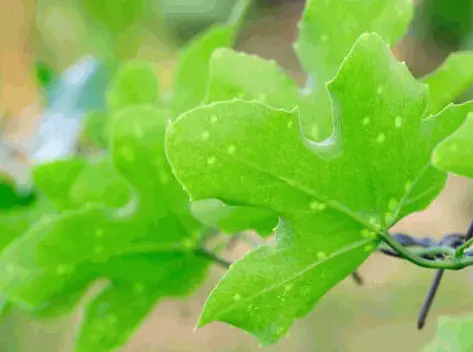
Larger Size
Shade leaves are typically larger than sun leaves. This is because larger leaves have a greater surface area to absorb the limited light.
Thin And Flexible
Shade leaves are thin and flexible, which enables them to bend and adjust to the direction of available light. The thinner structure also allows for greater light penetration into the leaf, ideal for rather low light intensities.
Lower Chlorophyll Content
Shade leaves have a lower chlorophyll content than sun leaves. This is because they are adapted to improve light absorption under low light levels rather than to protect against excess light.
Increased Number Of Stomata
Shade leaves have a higher stomata density, specialised cells that allow for gas exchanging between the leaf and the environment. This helps to maximise the uptake of available carbon dioxide for photosynthesis.
Broad Leaf Shape
A shade leaf will often have a wide leaf shape, which increases their surface area and maximises their ability to capture available light.
Higher Water Content
Shade leaves often have a higher water content than sun leaves. This is because these plant leaves adapt to absorb and retain water under low light and high humidity conditions.
Overall, the characteristics of shade leaves reflect the adaptations that enable them to thrive under low light situations. These adaptations help shade leaves to improve their ability to absorb available light, efficiently use water and carbon dioxide for photosynthesis, and support their growth and development in shaded environments.
Check out: Soaker Hose Vs Drip Irrigation: Which Is Best?
What Are The Key Differences For Sun Leaves Vs Shade Leaves?
A quick breakdown of the key differences for sun leaves v shade leaves is as follows:
- Sun leaves tend to be smaller, thicker, and have a glossy, waxy coating on their surface area to protect them from water loss and high solar radiation damage. Sun leaves are also a lighter green than shade plants and leaves, even on the same tree.
- Shade leaves, in contrast, are usually larger and thinner to maximise light absorption under low light.
- Sun leaves have more chlorophyll than shade leaves, which enables them to absorb more light intensity and maximise photosynthesis under high light.
- Shade leaves have fewer stomata, specialised cells that help to reduce water loss, and maximise water-use efficiency under shaded conditions.
Overall, sun leaves and shade leaves have evolved different adaptations to maximise their photosynthetic capacity under different light.

What Are Palisade Mesophyll Cells?
The part where photosynthesis takes place in the leaf is the palisade layer, and palisade cells contain chloroplasts. Chloroplasts are the plant cell organelles responsible for converting light to energy in the tree or plant.
Does Every Tree Have Sun And Shade Leaves?
The answer is that most trees have sun and shade leaves. There are rare occasions where a tree only has sun leaves or only has shade leaves, but this doesn’t happen with any great frequency.
Studies indicate trees which have both sun and shade leaves perform better in most environments than trees which only have a single form of leaf. Understandably, the benefits of both types of leaves combine to make a tree healthier and more likely to grow robust than a tree which has only one form of a leaf.
Sun leaves lie on the tree’s uppermost branches, exposed to full sunlight. On the other hand, shade leaves lie on lower branches, where they receive less direct sunlight, receiving self shading benefits from the outer canopy.
The proportion of sun and shade leaves can vary depending on factors such as the density of the tree canopy, the tree’s growth stage, and the level of competition for light from other nearby trees.
An example of how the two types of leaves work together relates to saturation points.
Sun leaves will reach the light saturation point much faster than shade leaves, and once the sun leaves reach this point, the photosynthetic rates fall. However, light still goes beyond the outer canopy, reaching the shade leaves.
The shade leaves are yet to reach their light saturation point, allowing photosynthesis to continue, even though the sun leaves are not behaving this way anymore.
Some tree species, such as beeches and hemlocks, have leaves that grow in shade, while different species, such as oaks and pines, are adapted to grow in full sun. However, even sun-loving species can produce shade leaves when growing in the inner canopy’s or crowded forests.
Deciduous trees are known for allowing light through in spring while offering shaded leaves, protecting grass and plants in the summer. If you are looking for a higher leaf mass to offer more protection to plants and shrubbery, this form of tree is a sensible choice.
Overall, the ability of trees to produce both sun and shade leaves is a necessary adaptation that enables them to photosynthesize efficiently under a wide range of light conditions.
Check out: When Is The Best Time To Prune Trees In The UK
Can A Shade Leaf Turn Into A Sun Leaf?
A shade leaf can turn into a sun leaf and vice versa, but the process must be gradual. All leaves can adapt to new or changing light conditions, but only if the tree and leaves have time to adjust to the new environment.
Tree And Plant Leaves Adapt
Gardeners should be cautious when moving an indoor plant to an outside area in direct sunlight. Equally, placing a tree previously shaded from the sun into a garden space with natural daylight is likely to have a negative outcome.
If you are moving a tree from a shaded area to complete sunlight, create a barrier or form of shade which you decrease over several days. This helps your leaf adapt to its new surroundings, ensuring it remains efficient in sustaining the tree.
Check out: Best Tool For Cutting Small Trees
Why Are Shade Leaves Bigger Than Sun Leaves?
Shade leaves have a larger surface area than sun leaves so that these leaves receive less light. Shade leaves expand to try and collect as much sunlight as they can.
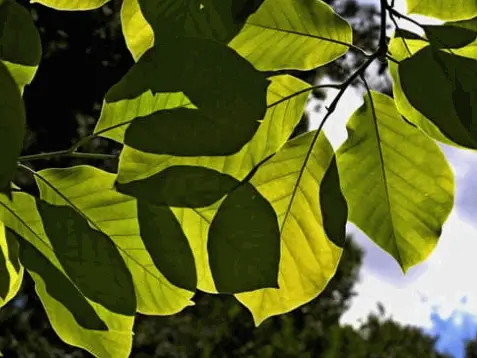
Why Are Sun Leaves Thicker Than Shade Leaves?
Sun leaves are thicker than shade leaves because they have additional layers of palisade mesophyll cells. The increased exposure to light means these leaves need more chloroplasts which collect and convert light energy for the trees.
This means that even though these leaves are smaller than shade leaves, the greater leaf thickness leads to a higher photosynthetic capacity, resulting in improved photosynthetic performance.
Why Are Shade Leaves A Darker Green Than Sun Leaves?
The reason shade leaves enjoy a darker green colour is down to the lower level of light exposure. This results in larger chloroplasts, which means these leaves have more chlorophyll.
A few things react to make leaves green in colour, but chlorophyll is a significant factor, and the heightened level of this substance in shade leaves means they enjoy a darker green than sun leaves, which are a lighter green.
If Sun Leaves Adapt To The Sun, Why Does Sunburn Occur In Leaves?
While sun leaves tend to enjoy great benefits from sunlight, and leaves can adapt to take in more of the sun, on some occasions, leaves can suffer from too much exposure to sunlight. This may come when a tree or leaves have changed the environment, exposing it to a much greater level of sunshine than previously experienced.
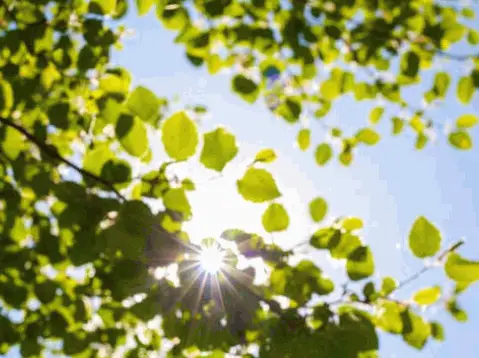
Excessive Solar Radiation And Low Soil Fertility Place A Tree At Risk
The intensity of sunlight is too much at the time, with leaves becoming too hot to function correctly.
An issue also arises due to a lack of moisture in the soil. If there is a drought or insufficient water in the tree’s roots, this might result in leaves at risk of sunburn. Depending on the level of sunburn, leaves can recover.
Check out: Arthritis Garden Tools
What Are The Signs Of Sunburn For Leaves?
The signs of sunburn on leaves include yellowing or browning of the leaves, wilting, and in severe cases, the leaves may dry out and fall off.
How Can You Prevent Sunburn On Leaves?
To prevent sunburn on leaves, it’s essential to provide plants with adequate shade or cover during the hottest parts of the day, especially during the summer months. Additionally, ensuring the tree is well-watered and well-nourished can help to reduce its susceptibility to sunburn.
How Do Leaves Recover From Sunburn?
To recover from sunburn, leaves must go through a process called photosynthetic recovery. During this process, the plant will produce new pigments that absorb more light and help protect the leaves from further damage.
In addition, the plant may also produce more antioxidants, which can help to reduce the damage caused by UV radiation. It’s important to note that recovery from sunburn can take some time, and it’s crucial to provide the plant with adequate water, nutrients, and protection from the sun while it’s recovering.
Are Different Species Of Trees And Their Leaves Better At Adapting To Light?
Yes, different species of trees have varying abilities to adapt to changes in light conditions. Some species adapt better to low-light environments, while others thrive in bright, sunny conditions.
For example, shade-tolerant tree species such as hemlocks and beeches have evolved to grow and reproduce in the shade of larger trees. These species are adapted to low light and can photosynthesize efficiently, even in dimly lit environments.
On the other hand, sun-loving tree species such as oaks and pines are adapted to grow in bright, sunny environments. These species can tolerate high levels of direct sunlight and are better equipped to photosynthesize under these conditions.
In addition to these broad adaptations, individual trees within a species can also show variation in their ability to adapt to changes in the sun compared to other trees. For example, a tree growing on the edge of a forest may be better adapted to handle changes in light and solar radiation than a tree growing in the heart of the forest, where light conditions are more stable.
Overall, different tree species have evolved different strategies to adapt to changes in light. These adaptations play a critical role in determining where and how these species grow in natural ecosystems.
Check out: Best Tools To Cut Tree Branches
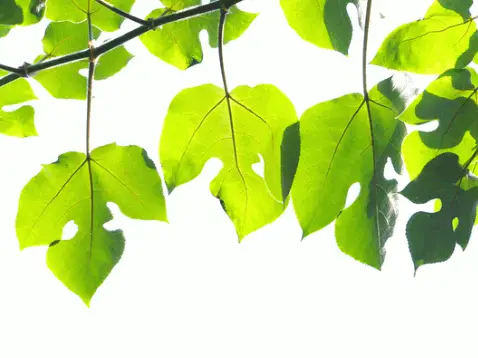
Get To Know Sun And Shade Leaves
Knowing that the leaf size differs between sun and shade leaves is an important piece of knowledge, as is the level of leaf thickness, and even the colour of the leaf surface when looking at sun and shade leaves.
The nature of shade leaves and sun leaves are impacted by many things including different light regimes, the palisade layer, the size and number of photosynthetic cells, low light intensities and even the tree canopy or surface area of leaves and trees. Hopefully this information helps you better understand sun and shade leaves, how they help a tree, and how an individual sun leaf or shade leaf will respond to its surroundings.

